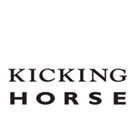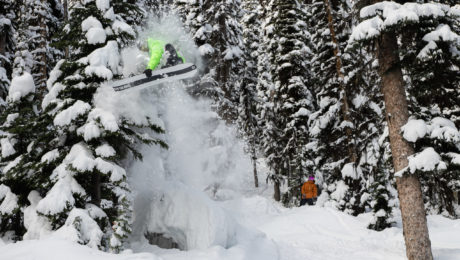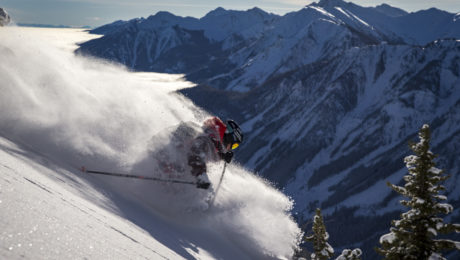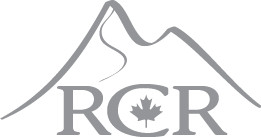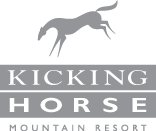Triple Dip: Why You Want to Make It to Kicking Horse This Winter
They call it the jet stream—a narrow band of wind high up in the atmosphere that blows from west to east. It’s what brings us most of our weather in North America. During years when the Pacific Ocean is warm, the jet stream veers south and B.C. gets less storms. On years when the Pacific Ocean is cold, however, the jet stream juts north, soaking up Arctic air before dumping loads of snow on the Pacific Northwest and Interior B.C. We call those La Niña years, and to a skier or snowboarder, it’s the best thing ever. Part of that is because they deliver the driest most consistent powder on earth, but it’s also because La Niña winters usually only come around once or twice a decade.
We’ve been lucky enough to have La Niña stick around for the last two winters in B.C., and oh my has it made this horse kick. It snowed 66 days during the 2021/22 operating season, which is four months long at Kicking Horse. Do the math on that, and it was storming more than half the time—piling up to eight metres total. That’s over 26 feet, surpassing even the 24 feet from the season before!

Photo from the 2021.22 Season
And guess what, it’s still here. Climatologists are predicting an unprecedented third winter of La Niña this winter: a never-before-seen “triple dip.” That means if you’ve been trying to pick a perfect season to visit Kicking Horse, this is it. Not only is it going to puke coldsmoke all winter, but the pandemic is finally over. Covid restrictions have all but vanished in B.C. (though we need to be vigilant), and this will be the first “normal” season in three years. High-fives in the lift line? Check. No more masks? Check. No more distancing in gondola cabins? Check. That all means getting up the mountain faster, and getting more of the fluffy white stuff in your face on the way down.
Plus, if you’re visiting from the U.S., you’ll be getting an especially hardy discount courtesy of the exchange rate. The U.S. dollar has been outpacing the Canuck coin by a solid 25 to 30 percent for the last six months, and there’s no signs of that changing. Kicking Horse also just updated its grooming fleet with a new, state-of-the-art, environmentally friendly cat to help boost your experience on corduroy—because, let’s be fair, it won’t snow every day… just most.
Photos by Tim Grey & Aiden Trudel
- Published in Winter
Here’s What Makes This The Season To Visit Kicking Horse Mountain Resort
You’ve read all the stats: 4,133 feet of vertical, 2,800 acres and over 120 marked runs. You know that on average the place gets 24 feet of snow each season. You even know it’s got the fifth highest vertical drop in North America—just six feet shy of Jackson Hole’s. But for some reason you’ve still never been to Kicking Horse. OK, Maybe you’re unmoved by stats. But did you also know the last two seasons the snowfall has actually exceeded 33 feet? And that the resort just absorbed an entire new bowl into its tenure that used to be heli-ski terrain? And that Kicking Horse is now on the Epic Pass?
As winters get more temperamental around the globe, and multi-area passes give us more mobility, devotees of powder will want to take note that El Niño is coming—the warm period in the Pacific Ocean’s shifty mood cycle. And while that often spells gloom for the lower 48, Kicking Horse has historically been in the sweet spot during El Niño winters: never too hot, never too cold, and above average for snowfall. Perched along the rugged spine of the Purcell Mountains, the resort is uniquely positioned in a climatic zone that Mountain Safety Supervisor Kyle Hayle calls “conterior”—a hearty mix of “interior and continental conditions.”
Only 2.5 hours from Calgary International Airport, what you get is a weatherproof series of crescent promontories drawn from the pages of history, only a snowball’s throw from the birthplace of North American mountaineering—Rogers Pass. After 19 years quietly drawing upon a big-mountain legacy brought forth by turn-of-the-century Swiss guides and mountaineers like Syd Feuz (the namesake of one of the mountain’s best bowls) Kicking Horse is flaunting its alpine identity more than ever.
You can see it in the complex avalanche control program—one of the largest in North America—that prioritizes getting guests right to the goods the day of the storm: no waiting for the top to open. And you can see it on the Freeride World Tour (FWT), where the resort is the only North American five-star stop, and for good reason.
“Kicking Horse Mountain Resort boasts Canada’s steepest and burliest terrain, all coated with its famous ‘champagne powder,’” says Freeride World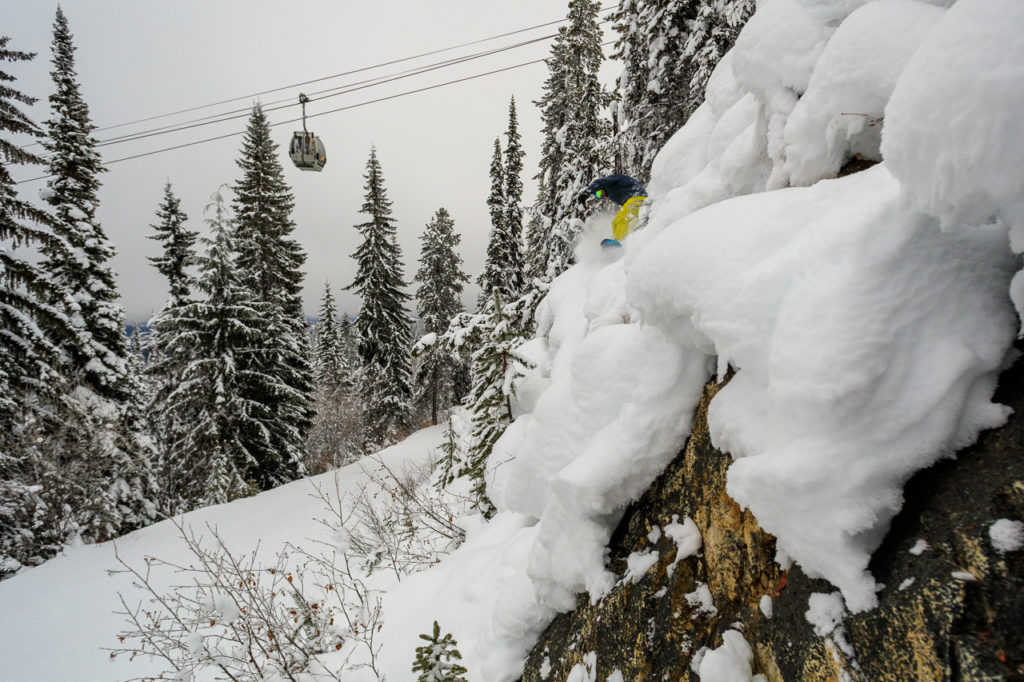 Tour Senior Communication Manager Emile Lavoie.
Tour Senior Communication Manager Emile Lavoie.
The expansive string of alpine amphitheatres with a game-on philosophy and low-key vibe makes it more akin to skiing the backcountry than any other resort in North America. With the recent absorption of adjacent terrain from Purcell Heli-skiing, that’s ever more true. It’ll eventually add 660 acres, boost the top elevation to 4,460 feet, and add a fifth alpine bowl with cruisy south-facing slopes all above treeline. While the mountain has yet to announce what part of that will open this winter, look no further than last year’s FWT stop at Kicking Horse for an idea of what the rowdiest bits could look like—it was the mountain’s first foray into the spine-tingling new zone.
What will be yours?
- Published in Winter






